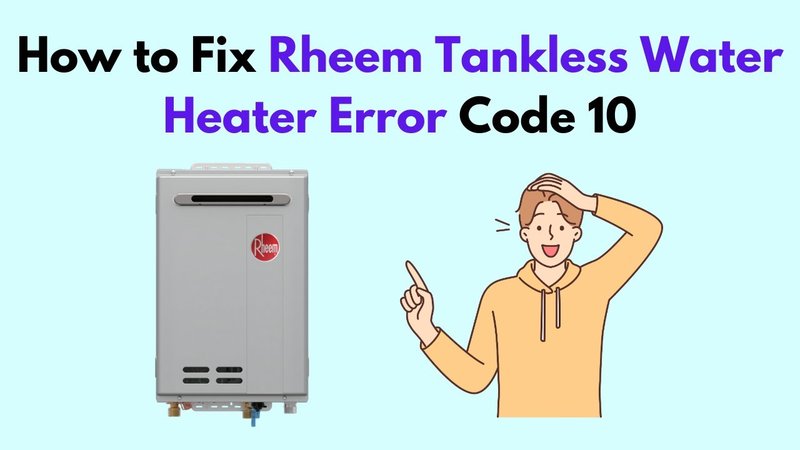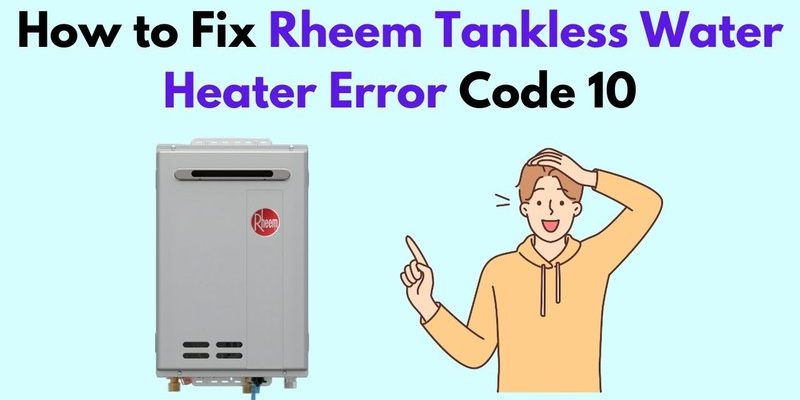
Imagine your water heater as a vital yet silent guardian of your home’s comfort. This trusty appliance works tirelessly behind the scenes to ensure you have hot water at the ready, whenever you need it. However, like all hardworking machines, it occasionally runs into issues. The Error Code SE is a way for your Rheem water heater to communicate that there might be a problem with its sensor. It’s much like when your car’s dashboard lights up to tell you that something under the hood needs attention. You might be wondering, “Can I handle this on my own, or should I dial up a technician?” Hang tight; we’re about to dive into all the nitty-gritty details.
Understanding Rheem Error Code SE
First off, let’s demystify what this Error Code SE actually signifies. In simple terms, the ‘SE’ stands for “Sensor Error.” Your Rheem water heater relies on various sensors to monitor and adjust the water temperature and flow. Think of these sensors as the eyes and ears of your heater, providing critical information necessary for its operation. When these sensors pick up an anomaly or malfunction, they trigger the SE error to alert you.
Why do these errors happen? Well, several factors could be at play here. Over time, sensors can become dirty or corroded, especially if your water contains high levels of minerals. Imagine your water heater as a sophisticated orchestra where everything needs to be in harmony: if the sensors aren’t working right, the whole performance could be thrown off-balance. Simple issues like a loose connection or more complex problems such as internal component failure can also be culprits.
Although the idea of a sensor malfunction sounds technical, it’s often a common issue that can crop up occasionally. The question then becomes: is it something that requires immediate professional intervention, or can you safely troubleshoot it yourself? In most cases, some basic DIY checks might offer solutions, but for peace of mind and the longevity of your unit, knowing when to call a technician is vital.
When To Try DIY Solutions
Alright, ready to roll up your sleeves? There are a few simple checks you can perform before reaching for the phone. First, ensure that your water heater has power. A tripped circuit breaker or a switched-off unit might be the cause of the issue, not the sensors themselves. Think of it like troubleshooting a stubborn lamp that won’t turn on; sometimes it’s just unplugged, right?
After confirming that power isn’t the problem, the next step is to reset the unit. Often, a simple reset can clear minor glitches and return the sensors to their rightful function. It’s like rebooting a sluggish computer to get everything running smoothly again. However, it’s crucial to check your unit’s manual for specific reset instructions tailored to your model.
If the SE error persists even after these checks, it’s time to consider whether deeper issues might be at play. Keep in mind that while these preliminary steps are safe to perform, delving into more complex repairs without expert knowledge can lead to further complications. The golden rule here is if you’re unsure or uncomfortable, it’s best to consult a professional.
When To Call A Technician
So, when should you absolutely call in a technician? If your initial troubleshooting didn’t clear the error, then that’s your cue. A qualified technician will have the experience and tools necessary to inspect the sensors and diagnose the problem accurately. You wouldn’t try to fix a leaking roof unless you were a roofer, right? The same logic applies here.
One key advantage of calling a professional is that they can perform a comprehensive inspection. This check-up may reveal underlying issues that you might not notice, such as wiring problems or deeper mechanical failures. Remember, tackling these problems early can save you from bigger headaches down the road, much like addressing a toothache before it becomes a root canal situation.
Lastly, peace of mind is invaluable. Knowing that a skilled technician has resolved the issue can help you rest easy, knowing your home’s hot water system is back in top form. Plus, regular maintenance checks can also be set up during this visit to prevent future issues, ensuring you get the most out of your trusty water heater.
Preventative Maintenance Tips
Keeping your Rheem water heater in tip-top shape doesn’t have to be a chore. Think of it as giving your bike regular tune-ups to keep it running smoothly. Firstly, regular maintenance checks are vital. Scheduling an annual service with a qualified technician can help preempt issues before they morph into costly repairs.
Another good practice is to periodically check the area around your heater. Make sure it’s clean and free of dust and debris, which can affect its performance. Routine inspections for any visible signs of wear, like rust or leaks, can also help catch potential problems early. It’s like checking your car’s tire pressure before a road trip — taking small steps now can avoid bigger hassles later.
Lastly, always use quality components and parts if replacements are needed. Investing in genuine parts ensures that your heater functions as intended and reduces the risk of future errors, much like opting for original phone chargers over cheap knock-offs. By taking these preventative steps, you can help ensure that the Rheem Error Code SE stays a rare occurrence, and your water heater continues to serve you faithfully for years.
